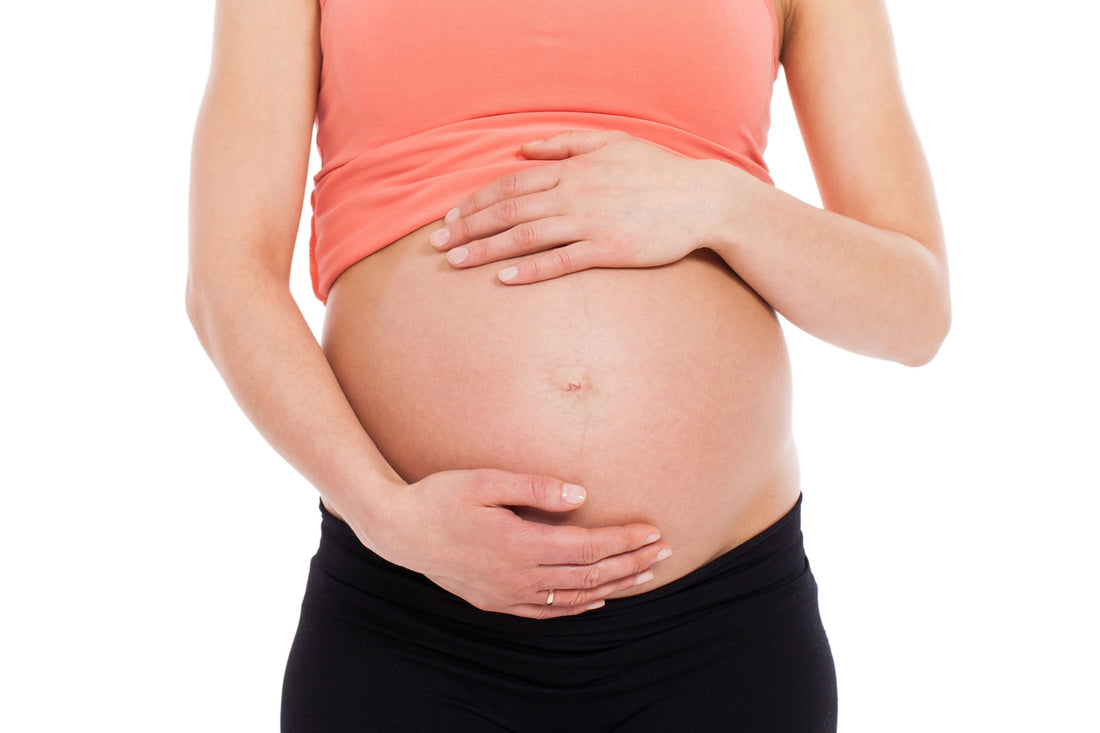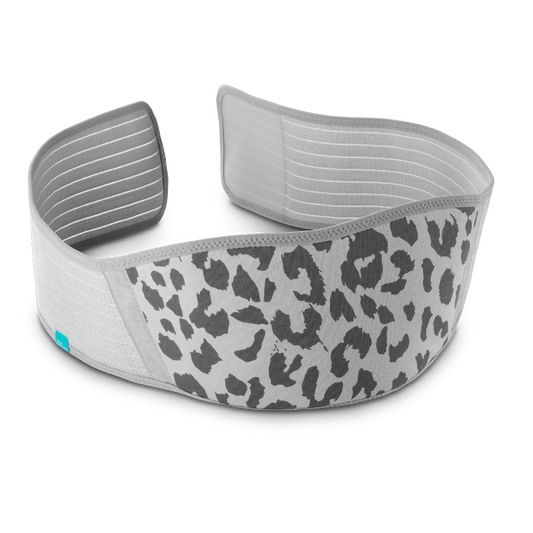You look around and spot other pregnancy bumps which are either much bigger or much smaller than yours. Other people may frequently comment on the size of your bump, with “your bump’s huge” or “how far along are you? or “you’re not showing at all yet, are you?!". Such comments may make you wonder if your pregnancy bump is the right size or not.
Of course it is! As there are many types of pregnancy belly shapes and the size of a pregnancy bump varies from one woman to another. All that matters is that your midwife or doctor is happy your baby is growing on track and tells you this during your ante-natal appointments.
But which factors influence the size of your pregnancy belly? Let's take a look together!
Small pregnant belly: causes
The size of an expectant woman’s belly varies greatly from mum to mum, as it is linked to physical conformation, i.e., her weight, height, how fit or sporty she is... as well as the number of past pregnancies she’s had.
Therefore, it’s impossible to define one standard bump size! Every belly grows differently, just as every pregnancy is different.
If you have a small bump in pregnancy, then it may be due to one of the following factors:
- It’s your first pregnancy
It takes longer for you to show during your first pregnancy, and your bump will remain smaller than during your second or third pregnancy. This is because your uterus and musculature have a more toned tighter fit.
- You’re tall
If you have a longer torso, your womb will have more room available to grow lengthwise and your belly may not need to grow outwards too much.
- You’re physically fit
If you are active and partake in sporting activities on a regular basis, your abdominal muscles will be more toned and won’t expand as easily as those of us who are less athletic.
Large pregnant belly: causes
As we’ve already mentioned, it’s impossible to define one standard size for all pregnancy tums, this is because it’s linked to a mum’s physical conformation. The number of previous pregnancies you’ve had is also an influencing factor.
If you find that your bump is larger than other mums-to-be, or in comparison to your previous pregnancy, this is what it may depend on:
- It’s not your first pregnancy
If your muscles have already been stretched out from a previous pregnancy, they will tend to be less resistant and, as a result, your bump will show much sooner.
- You are short
Women who are shorter in height will seem to have a larger bump in the later stages of pregnancy, simply because the baby will have less space available to them vertically.
- Physical fitness is not top of your priorities
Women who regularly practise sport tend to have more toned abdominal muscles which are more resistant to the expansion of your womb during pregnancy, resulting in a smaller bump.
Pregnancy belly month by month
When does a pregnancy belly show? Which month does it grow the most? Will my bump continue to grow until the very end? Read the answers to all your questions here!
Pregnant belly at two months
During the first few weeks of your pregnancy, you may not even know yet that you are actually pregnant and won’t notice anything different. You won’t be able to notice any visible changes to your 8 week pregnancy bump.
You may feel a little bloated, experience a little pain, find that you’re not as comfortable as before wearing tight clothing, especially around your waist... similar sensations to when your period is due.
Pregnant belly at three months
No one else will be able to notice your 12 week bump, but you may see a small bulge appearing just above your pubic area. If you find yourself opting for looser clothing than usual, then go with it. It’s important that you are comfortable with your bump at 12 weeks pregnant.
Pregnant belly at four months
Your 16 weeks pregnant bump starts to become visible at around this time, especially if it’s your second pregnancy.
Initially, your bump will grow outwards, below your navel area, and then, later on, start to grow upwards.
Five month pregnant belly
From this month onwards, hiding your bump becomes increasingly more difficult, as it grows more noticeably, and also starts to grow upwards.
Six months pregnancy belly
Your bump continues to grow upwards. This may trigger shortness of breath, especially when bending over. You may also experience indigestion as your stomach gets squashed.
Seven months pregnant belly
This is usually when your bump suddenly expands and grows much faster.
You may find that your posture and gait change as your body readjusts to support the extra weight with your 32 week pregnant bump.
It’s at this stage, that you’ll find comfort from wearing a pregnancy band, which will help support the weight of your expanding bump so that you can walk and move around more freely without feeling “heavy”.
8 month pregnant belly
The rate at which your uterus is developing tends to slow down a notch during this month: your 36 week bump still continues to grow, just not as visibly as during the last month.
If you’re still working and want to maintain your independence when driving, we recommend Koala Driving Belt, a pregnancy seat belt adjuster, which will enable you to continue driving with full peace of mind.
How does it work?
It repositions the lower part of your seat belt underneath your pregnancy bump, protecting your unborn baby in the event of a collision. Importantly, it doesn’t alter the normal function of your seatbelt in any way!
Belly at 9 months pregnant
During the ninth month of pregnancy, your bump drops, easing any shortness of breath and indigestion you may have experienced. Your baby moves towards the birth canal and undertakes a head-down position in preparation for the birth (although this does not mean that he or she will be born straight away, it may take a few weeks yet!).
This, of course, does not happen in every pregnancy, some babies may take on a breech position. Or if you’re having a planned caesarean section, then your baby may not have time to drop into the birth canal, which is the main reason why c sections are usually scheduled for the 37th week of pregnancy and not the 40th week, as the operation is much easier if the baby has not dropped down into the birth canal.
In summary, do not fret about how big or small your bump is when compared to other mums-to-be! Your bump size is not an indicator of how well your unborn baby is doing; each and every mum and bump are different.








